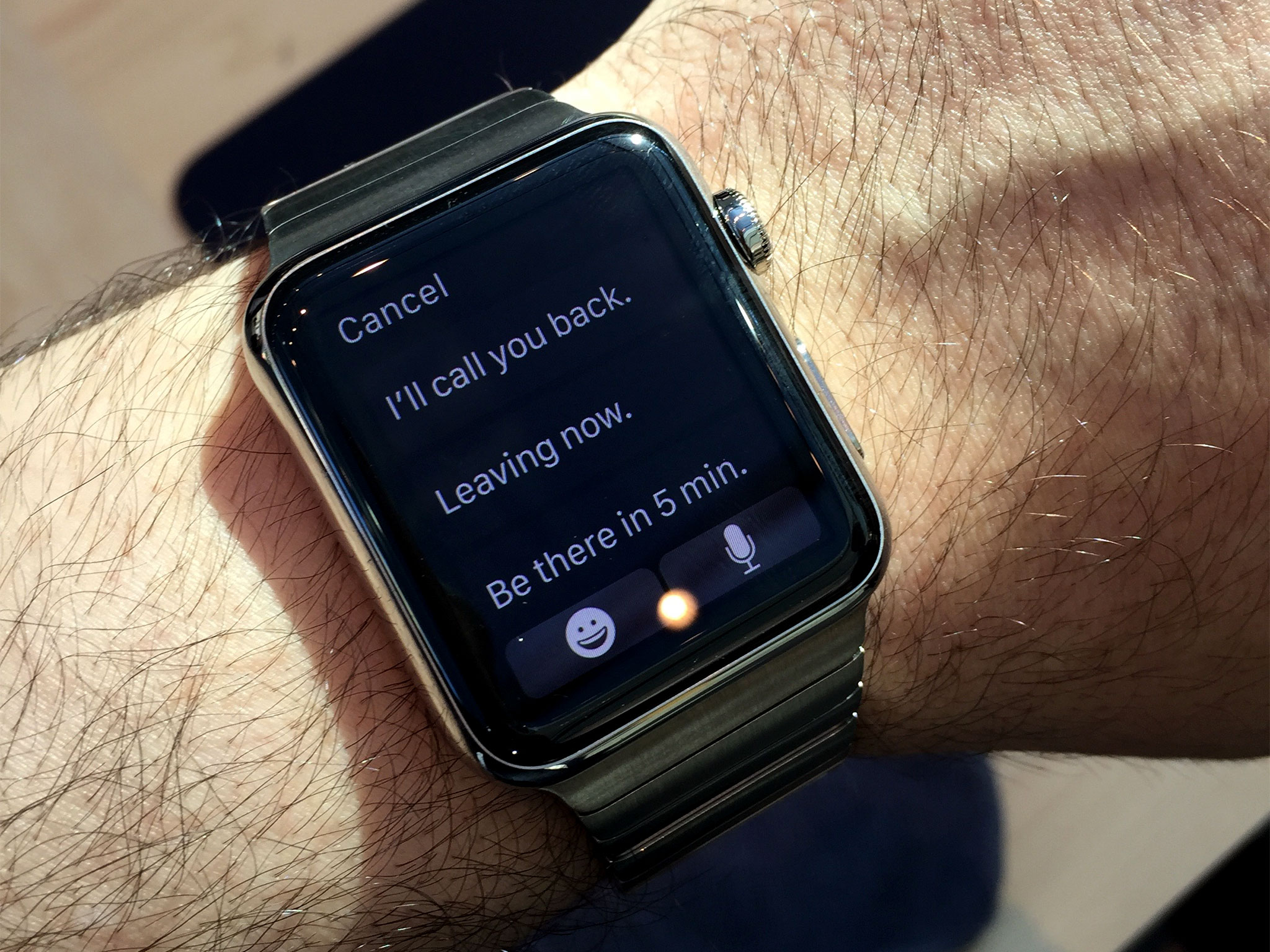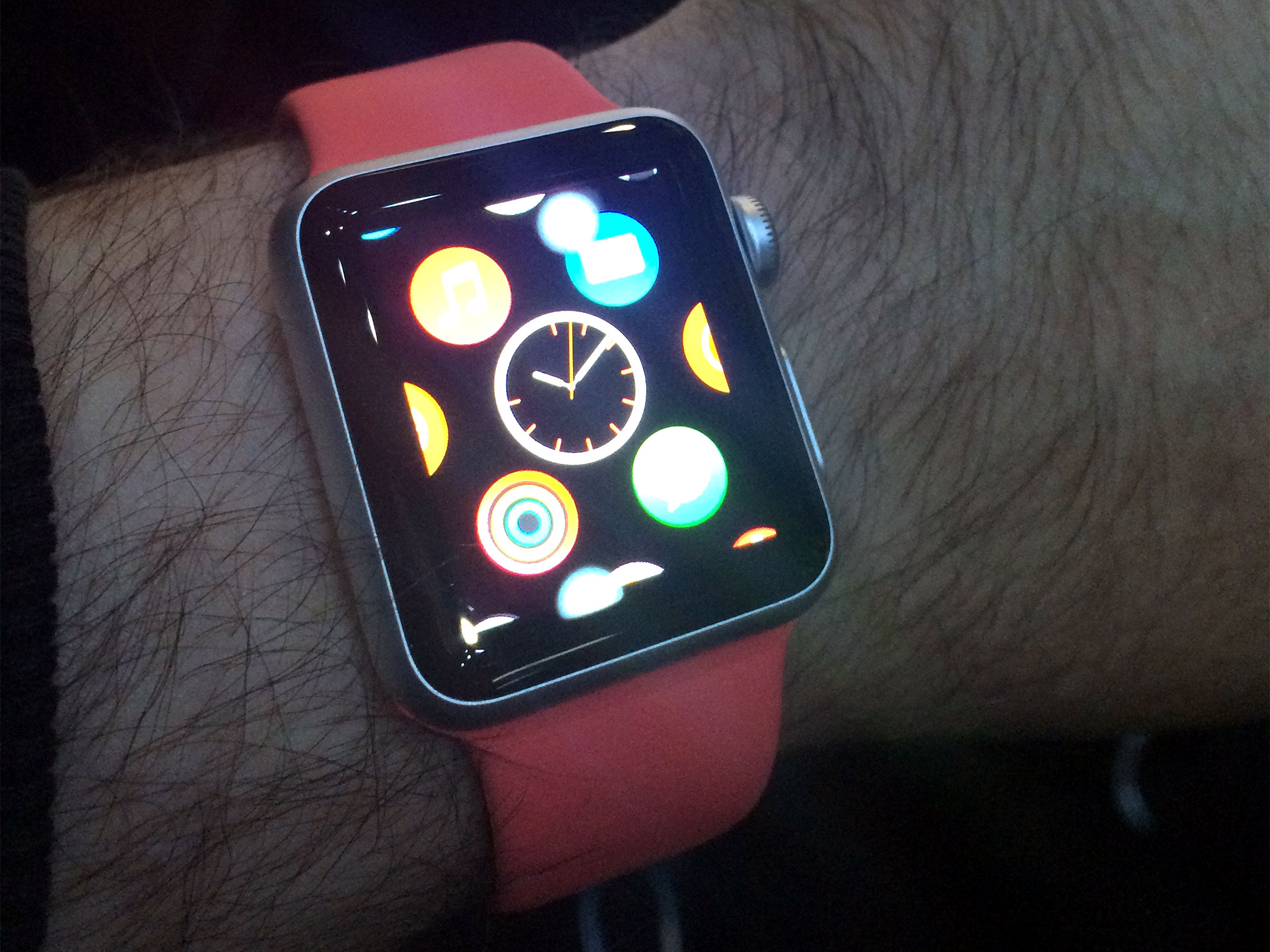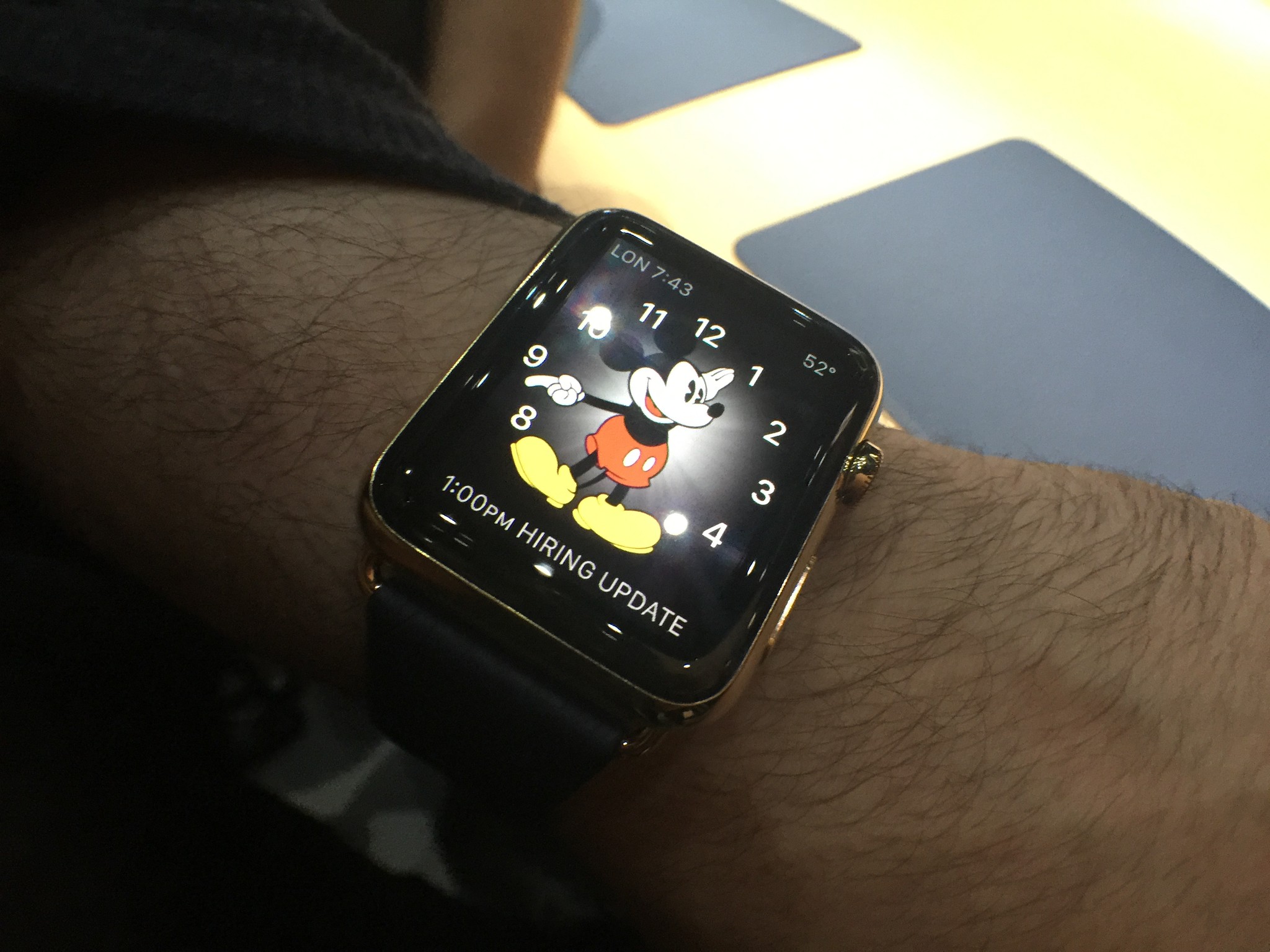Why I'm going with the 42mm Apple Watch

If you haven't seen an Apple Watch in person, you're missing out. Aluminum Sport, stainless steel Watch, or gold or rose gold Edition, they're all built spectacularly well — this isn't your other vendor's smartwatch. They're also, regardless of whether you go 38mm or 42mm, quite moderately sized. The small isn't too small and the big isn't too big. That means most people will have a choice as to which size they want to get. I found myself in just that position and, ultimately, here's why I decided to go big.
Right sizing
I've worn almost every major fitness band out there, from the Fitbit to the Jawbone Up to the Nike Fuelband. I've owned a Pebble and I've tried a couple of the Android watches, including a Samsung and the Moto. None of them had anywhere near the fit or finish of the Apple Watch, but the smartwatches especially were kind of big and clunky.
That made me a little nervous about the 42mm Apple Watch, at least initially. Sure, 42mm is only 4mm more than 38mm, but at that scale, that's ten percent of the size. At the September 2014 introduction event, the Apple Watch I was given to try on was the 38mm Sport and I enjoyed the size a lot. There was something sleek and understated about it, and from the angle of the wearer, even the thickness disappeared.

At the March event I got to try on several 42mm Apple Watches, both stainless steel and Edition. They were heavier than the 38mm Sport, of course, and the difference in size was also noticeable. But they weren't too heavy or too big. It was at that point that I realized I could be happy with either one of them, and that's also when I decided I had to go big.
38mm — Almost enough
There's a lot to love about the 38mm Apple Watch Sport. With the right band, it's the lightest watch Apple makes, and that means it's ideal for anyone who wants as next-to-nothing as possible on their wrist, especially for exercise and athletics.
Both Apple Watch sizes have the same depth, so neither fits under a shift cuff more easily than the other, but the smaller size of the 38mm does make it seem lower profile.
The 42mm Apple Watch, however, has some major advantages. It can fit a slightly bigger battery and so gets slightly better battery life, though Apple hasn't said how much yet. It also has a higher resolution screen, offering more pixels not necessarily for content — that scales — but for touch targets.
Master your iPhone in minutes
iMore offers spot-on advice and guidance from our team of experts, with decades of Apple device experience to lean on. Learn more with iMore!

I can navigate the Apple Watch regardless of size — I've had plenty of time to try both repeatedly by now — but the 42mm being bigger just makes it that much easier.
It's not exactly the iPhone 6 vs. iPhone 6 Plus — I feel like we'd need a 46mm Apple Watch to make that comparison — but it's enough to be more usable without being excessively bulky.
That's why, at the end of the day, I ordered the 42mm Apple Watch. If I'm going to wear something on my wrist, I want to wear something on my wrist. I want every millisecond of battery life and every pixel of tap target I can get.
After her try-on, my mom ended up canceling her 38mm Apple Watch and re-ordering a 42mm as well. She liked the bigger touch targets, and the slightly bigger text and graphics as well. (My sister and Georgia ended up sticking with 38mm since they preferred how that looked on their wrists.)
Ultimately it's going to be a very personal choice. If your wrist is really slender or really thick, it may be an easier one, but if you're in the middle, it's also tough to go wrong. An Apple Retail Store try-on, if you have one in your area, is the best way to know for sure before ordering.
For me, however, I know I made the right choice to suit my tastes and use case, and I can't wait for my 42mm Apple Watch to get here!
- Buyers guide: 38mm vs. 42mm — Which Apple Watch size should you get?

Rene Ritchie is one of the most respected Apple analysts in the business, reaching a combined audience of over 40 million readers a month. His YouTube channel, Vector, has over 90 thousand subscribers and 14 million views and his podcasts, including Debug, have been downloaded over 20 million times. He also regularly co-hosts MacBreak Weekly for the TWiT network and co-hosted CES Live! and Talk Mobile. Based in Montreal, Rene is a former director of product marketing, web developer, and graphic designer. He's authored several books and appeared on numerous television and radio segments to discuss Apple and the technology industry. When not working, he likes to cook, grapple, and spend time with his friends and family.

